How to Fix PowerShell Not Opening on Windows?
Facing the issue of PowerShell not opening on your PC can be quite frustrating. This not only disrupts your smooth user experience but also prevents you from running commands and scripts. But there’s no need to worry because you’ve come to the right place. In this guide, you’ll find several effective solutions to help you overcome the problem of PowerShell not launching.

However, before diving into the solutions, it’s essential to identify the root cause behind the error so you can resolve the issue accordingly. Let’s explore some of the main causes you are unable to open PowerShell and how to eliminate them.
Table of contents
What stops PowerShell from opening in Windows?
The causes mentioned below contribute largely to PowerShell not opening on your computer. Here’s how:
- Corrupted System Files: Many applications rely on system files to function properly. If any of these system files get damaged, it can impact the smooth execution of PowerShell. Hence, corrupted system files can result in various issues leading to the inability of launching PowerShell.
- Conflicting Programs: Background process and any application clashing with PowerShell can also serve as a potential cause for the program not opening. These conflicting programs take place due to incompatibility of software, therefore causing clashes.
- Outdated App Version: A system bug within the current version of the app or an outdated app version can also be the reason for PowerShell not opening. Ensure you have the latest version of the program downloaded on your PC to fix any bugs or compatibility issues related to PowerShell and allow for optimal performance. Moreover, an outdated Windows system may also be the culprit.
- Hidden Malware: Another main cause for PowerShell not opening can be hidden software, such as a virus or malware. These malicious software can prevent the application from opening and can interfere with its function.
Now that we know the main causes behind this problem, lets’ go about fixing this issue.
Fix 1. Restart Your PC
Before we start with the technical solutions, the first fix is to restart your computer. If PowerShell is not opening due to damaged system files or temporary glitches interfering with the program, then simply restarting the system will resolve the issue. Doing so will refresh your computer system.
Here’s how to do it:
- First, click on the Start menu from the taskbar.
- Then, click on the Power icon.
- Select the Restart option.
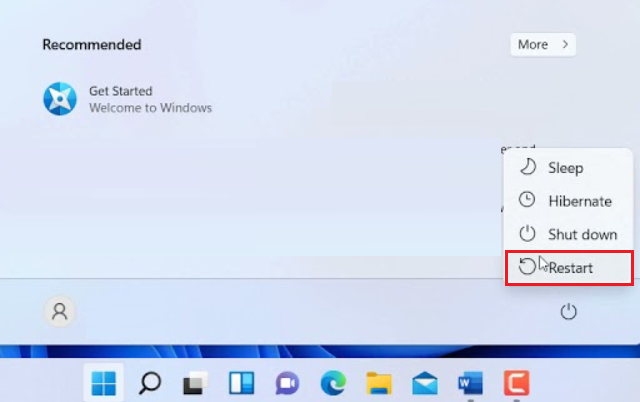
Your PC will now restart. Once it does, launch PowerShell and check if it opens.
Fix 2. Open PowerShell as Administrator
Another way to ensure that PowerShell launches effectively is to run the application with admin rights. This allows the necessary permissions needed by Windows PowerShell in order to function properly and run certain scripts and commands.
So make sure the system has the required rights by opening PowerShell as administrator. Follow the steps below to do so:
- Click on the Search icon from the taskbar.
- Type PowerShell in the search bar.
- From the right pane, click on Run as administrator and wait for it to launch.
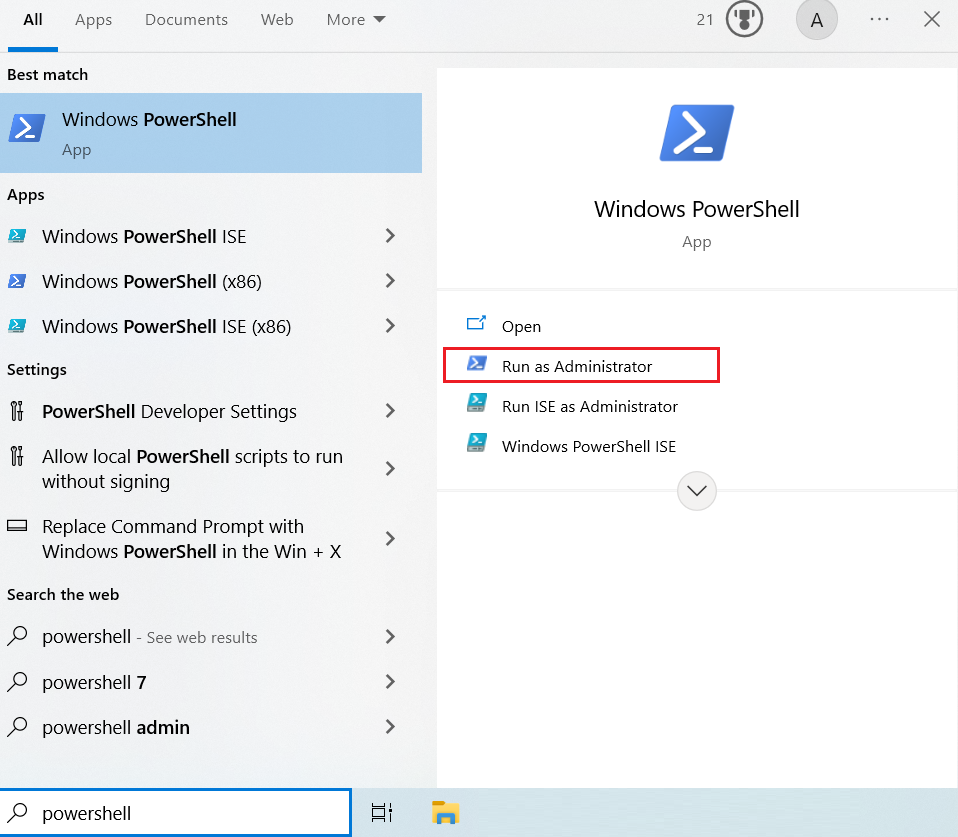
Fix 3. Check for Windows Updates
To fix PowerShell not opening, check for any pending Windows updates and download and install if there are any available. Having the latest Windows updates installed ensures that any bugs within the system or any other compatibility issues are resolved as it comes with the required fixes.
Therefore, this can also be a potential solution to your problem related to PowerShell.
You can check for Windows updates in the following way:
- Go to the Start icon.
- Next click on the Gear icon.
- From there, select Update & Security.
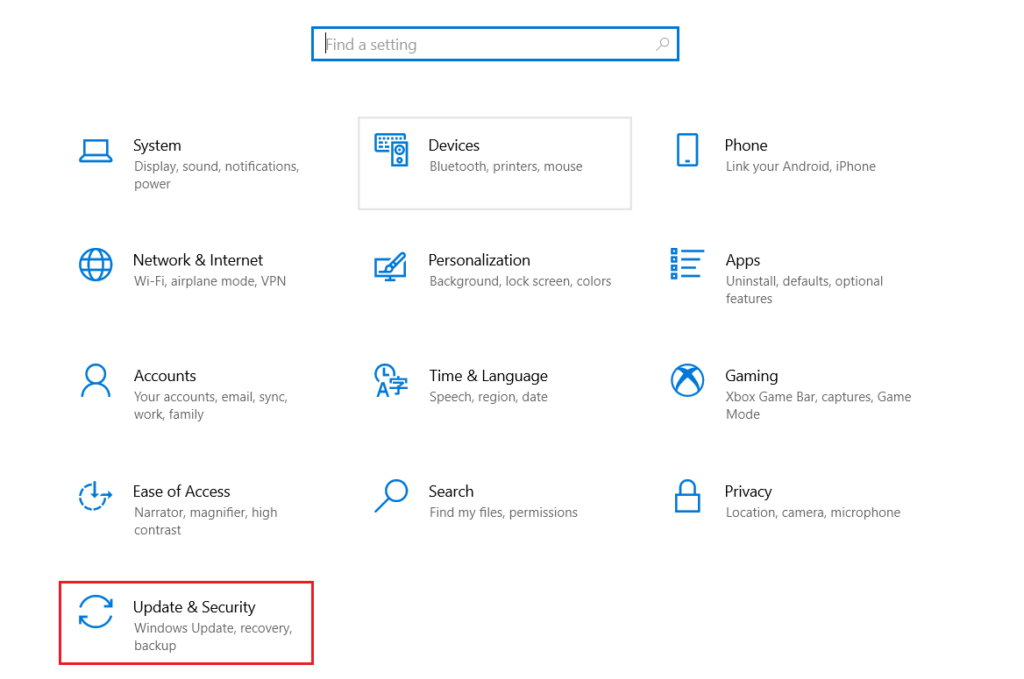
- Click on the Windows Update option from the left pane.
- Now, click on the Check for updates button on the right pane.

- If there are any updates available, click on Download and install.
Fix 4. Run Windows App Troubleshooter
Since PowerShell is a Windows Store app, running the Windows App troubleshooter can help detect any possible issues with it. So, run this diagnostic tool to identify the cause of PowerShell not opening and how to fix it.
Follow the steps below to do it:
- Go to the Start menu and click on it.
- Then, select Settings.
- After that, click on Update & Security.
- From the left pane, go to the Troubleshoot tab.
- Click on Additional troubleshooters.
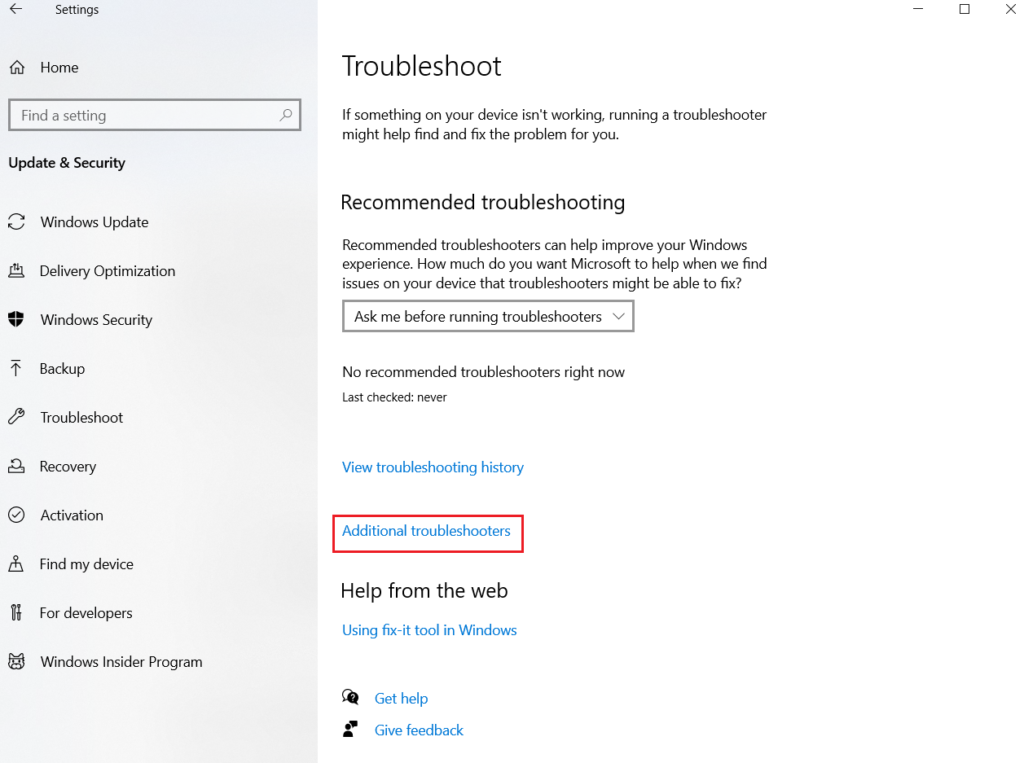
- Now, scroll down and select Windows Store Apps.
- Finally, click on Run the troubleshooter.
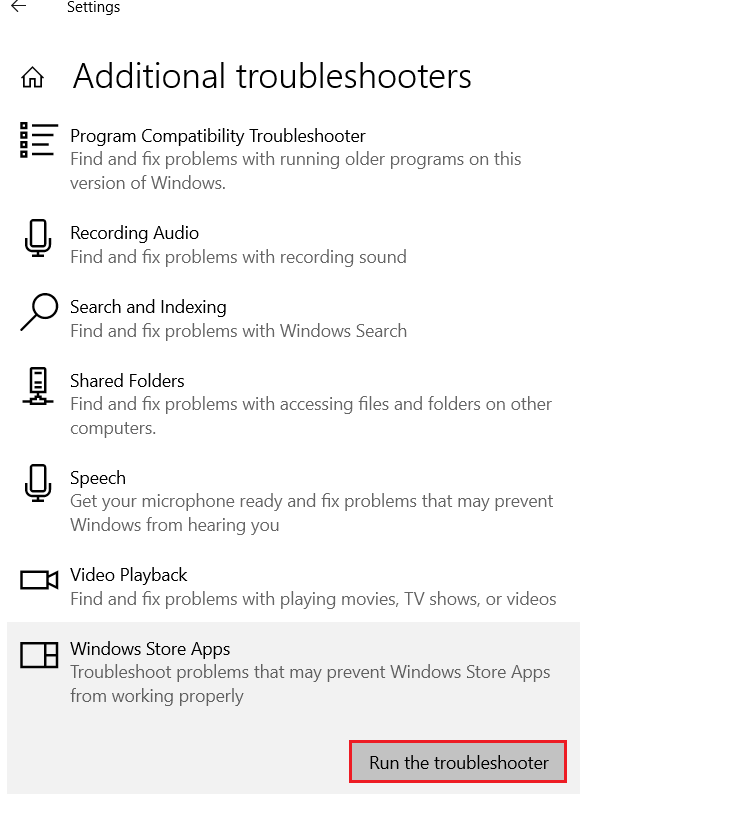
Fix 5. Perform SFC and DISM Scans
The SFC and DISM utilities are Microsoft built-in that enable the system to repair or replace damaged system files. So, if the PowerShell not opening issue is arising due to missing or corrupt system files, then running the SFC and DISM scans will prove to be an effective fix as these will restore the associated files to their original state.
Run the SFC and DISM by following the steps below:
- First, click on the Search bar located on the taskbar of your computer.
- Search for cmd.
- Then, select Run as administrator from the right pane.
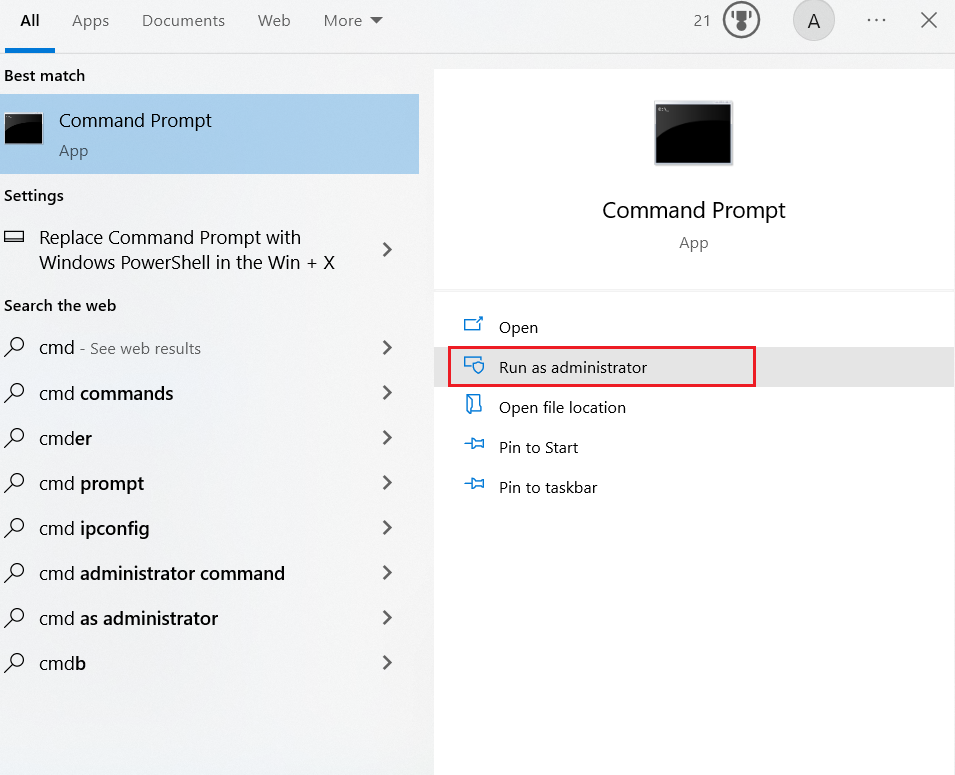
- For and SFC scan, type in the following command and wait for its completion:
sfc/scannow
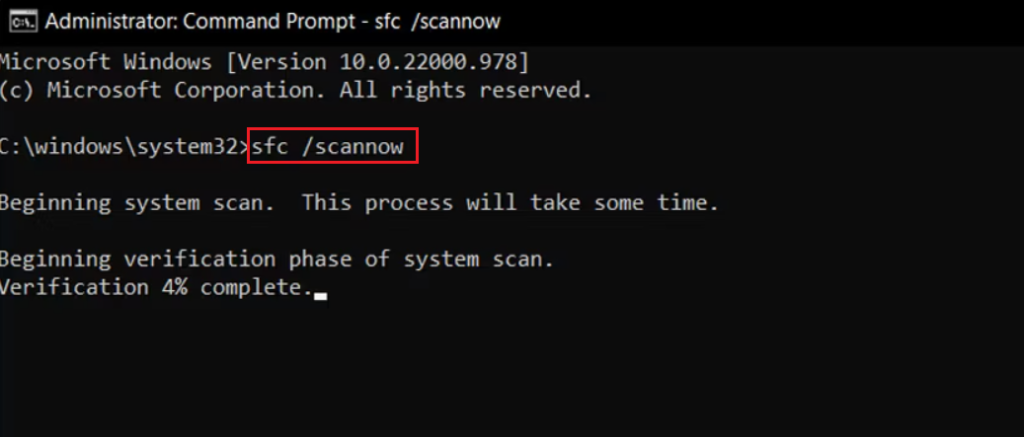
- Similarly, for a DISM scan, run the command given below:
DISM /Online /Cleanup-Image /RestoreHealth
- Once done, restart your computer and see if the PowerShell not opening issue is resolved.
- Click on the Search bar on the taskbar.
- Type cmd in the search bar.
- Then, select Run as administrator from the left pane.
- Enter the following command:
- Wait until the process is finished. Then, close the Command Prompt and see if it fixes the problem.
- First, press the Windows + R keys from your keyboard. This will open the Run dialog box.
- Then, type Control Panel in the text field and click OK.
- Once the Control Panel opens, go to Programs and Features.
- Select Turn Windows features on or off on the left pane.
- Scroll down and locate Windows PowerShell 2.0 and uncheck the box.
- Click on the OK option to confirm the action. This will uninstall PowerShell.
- Now, to re-install PowerShell follow the steps from 1-4 and check the box for the PowerShell feature.
- Press the Windows + E shortcut keys to open File Explorer.
- Navigate to the following path and make sure to replace Username with the one on your PC:
- Now to delete the PowerShell entry, select it and press the Delete key. If a confirmation box appears, select a suitable response.
- After that, make a new user account on the same PC and navigate to the same path as mentioned above.
- Next, transfer the PowerShell shortcut to a USB drive.
- Using your initial account, head over to the Windows PowerShell folder.
- Finally, paste the shortcut here. This will reset PowerShell to its default settings.
- First, right-click on the Start menu from the Taskbar.
- Then, select Settings.
- From the left pane, go to Apps.
- Select Installed Apps situated on the right pane.
- Search for Terminal in the search bar.
- Next, click on the horizontal three dots icon next to the Terminal app.
- Select Advanced options.
- Scroll down and click on the Repair button under the Reset section. Now check to see if the issue is resolved.
Fix 6. Run Shell Commands for Windows Store
Another solution on our list is to execute Shell commands for Windows Store. This will address any issues related to the components of the Windows Store, which also affect the proper working of PowerShell.
To run Shell commands for Windows Store, follow the instructions below:
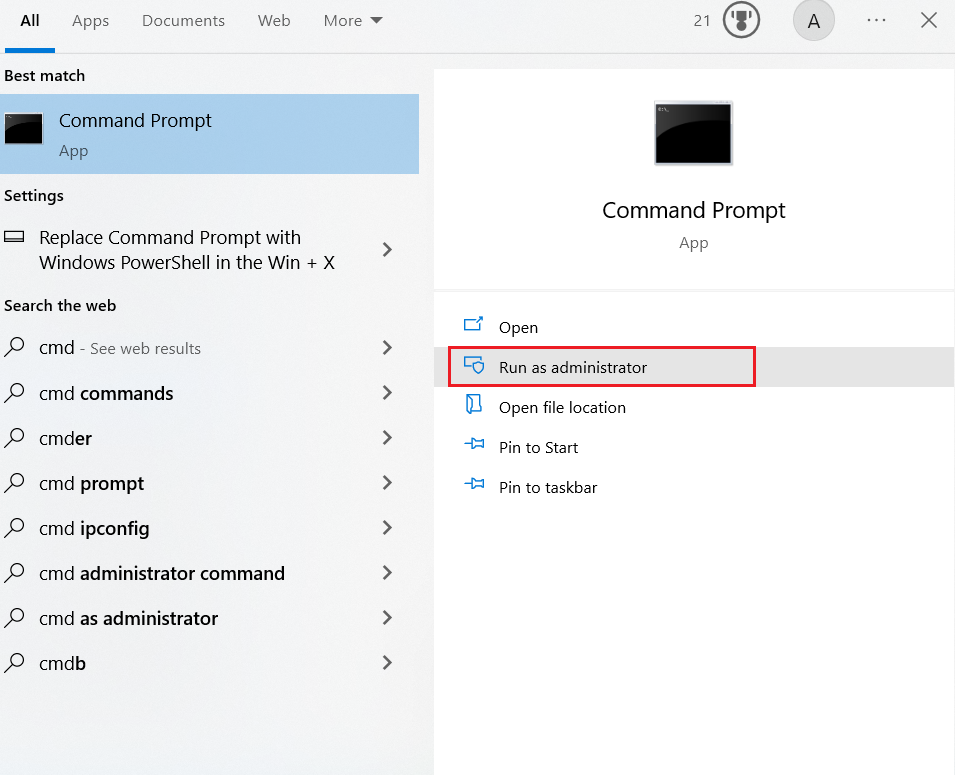
powershell -ExecutionPolicy Unrestricted Add-AppxPackage -DisableDevelopmentMode -Register $Env:SystemRoot\WinStore\AppxManifest.xml
Fix 7. Re-Install PowerShell
If the problem exists in the Windows PowerShell application itself, then uninstalling and reinstalling this program would be an efficient solution. Re-installing PowerShell will ensure all the files are in good condition and remove any corrupt file or other issues responsible for PowerShell not opening.
Here’s how to uninstall and reinstall PowerShell:

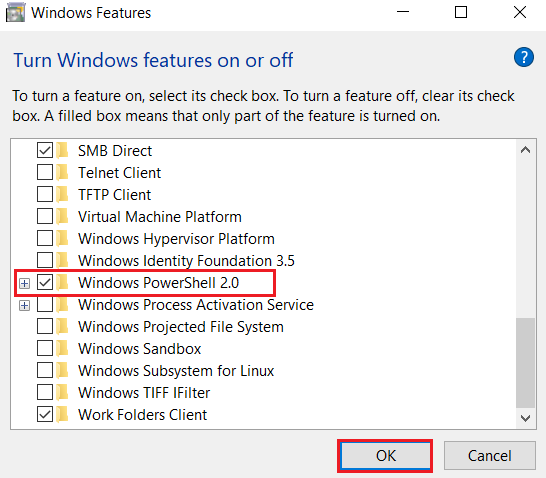
Fix 8. Reset PowerShell to Default
Resetting PowerShell to its original settings will remove any changes that might be causing the application to not open. This method is great for removing any sort of misconfiguration or damaged data and resolving the conflict.
Here’s how you can do it:
C:\Users\Username\AppData\Roaming\Microsoft\Windows\Start Menu\Programs\Windows PowerShell

Fix 9. Repair Windows Terminal
Last but not least, if PowerShell is not launching because of issues within Windows Terminal, then this solution is preferred. By repairing the Windows Terminal, you can ensure that the components essential to PowerShell’s proper functioning, are in a suitable state. This will help in overcoming the inability to open PowerShell.
Follow the steps given below to repair Windows Terminal:
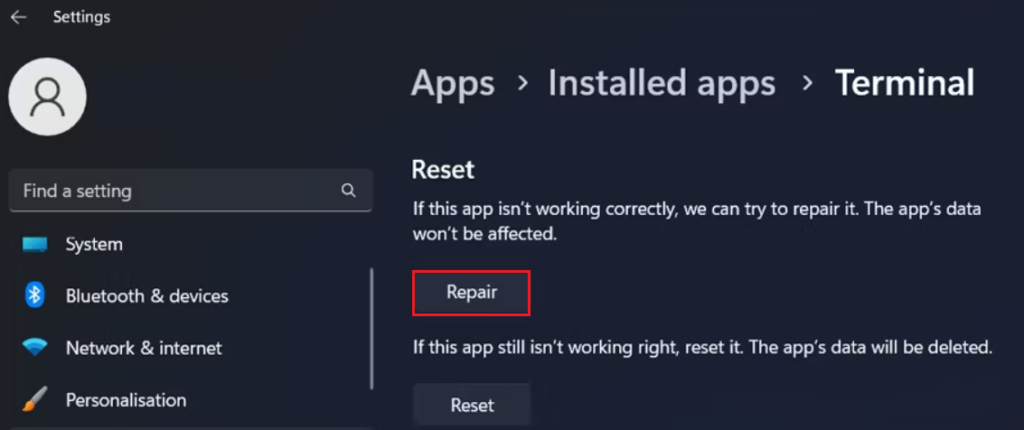
How to Fix PowerShell Not Opening on Windows - FAQs
In order to open PowerShell manually, go to the Start icon on the taskbar of your PC. Then, type “PowerShell” in the search bar and click on the Open option from the left pane. This will launch the application.
The Windows PowerShell is a useful program allowing you to access apps and change system settings. But running incorrect commands can potentially harm your computer. So, to protect your device from third-parties using this tool to run malicious commands, temporarily disabling the PowerShell feature can be a preferred option. When in need to use this application, you can always re-enable it.
 Reviewed by
Reviewed by 



